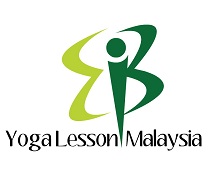As a beginner of a yoga class, don’t get weighed down by the sheer figure of yoga poses. Optimistically, your yoga training will be a lifelong pursuit, provides you plenty of time to become skilled at scores of postures. As your training progresses, you will be comfortable taking on more taxing poses, but when you are just a beginner keep things simple.
Deciding to start doing yoga is the first step. It’s quite simple to get trapped here; however; don’t be demoralized! Here is the information you need to get the next step and start getting the gratifications and benefits of yoga.
Pick a Yoga Style
 A slight research will be necessary on your part. Scores of yoga classes are out there, and you may get frustrated if you pick one that does not suit your personality and status of physical fitness.
A slight research will be necessary on your part. Scores of yoga classes are out there, and you may get frustrated if you pick one that does not suit your personality and status of physical fitness.
Spend a few minutes to learn different types of yoga class or styles. For a good number of beginners, a hatha or vinyasa class will be most suitable, depending on whether you prefer a slow or fast-paced class. These are fundamental styles, and you can always strive something enthusiastic later.
Find a Class
You can check local newspapers or magazines for listings or search online for “yoga”. Our resources may also help you to find a group yoga class in your area and pick a studio that is near to your workplace or home so that getting to class will be convenient. Make confirm you begin with a basic level class. Or you may opt for a Private Yoga Class at the comfort of your own home. For whatever class you choose from, finding a good yoga instructor may assist you stick with it. If you don’t tick with the first trainer you go to, keep trying until you get one you like.
Note What to Bring
On the first day, you don’t need to carry much except yourself and some cozy, breathable clothing. Nearly all studios have yoga mats that can be rented.
Get Some Knowledge about What to Expect in your First Class
In a conventional yoga class, the students put their mats facing the front of the room in a wobbly grid. It’s better not to align your mat closely with the one next to it because you and your fellow trainee may need some space in certain poses. The students habitually take a seat in a cross-legged position, hang around forclass to start or do some gentle stretching.
Beginner classes usually start by underlining standing poses, followed by lessons on forward bends, inversions and backbends. This class also introduces chants.
Standing pose are typically the most exhausting for beginners. Most of the time it is done first in a yoga class to build heat. In flow style /vinyasa yoga, standing poses are applied to form long sequences. In hatha classes, the standing poses can be applied on individually with rest between each pose.
Seated poses are often done at the end of a yoga class after the body is warmed up. Putting a folded blanket or block under your butt is a fine way to make yourself more relaxed in these postures
Resting/Supine Poses
It’s vital to know your resting poses, particularly child’s pose, which you need to do when you need a break during a yoga session.
Backbends can be some of the most painful poses for beginners because you rarely move like this in your daily life; however, backbends are necessary for spinal health and longevity.
These beginners’ balances are a significant way to develop the core strength which is essential for many of yoga’s more advanced postures. Though balances may appear hard initially, you will discover that you can improve noticeably with regular practice.
Finally, you have to keep in mind that, yoga is not competition. The only person you are running for is yourself. So go at your own pace and do not pay attention to what others are doing. It’s how you execute that counts.
Contact us now to join a beginner class near your location!


_1.svg.thumb.png)

